Black Puffer Jacket with Hood
Black puffer jackets with hoods offer the perfect combination of warmth, protection, and style. The hood provides crucial protection for your head and neck in cold and windy conditions, while the insulated design traps heat effectively. From urban commutes to outdoor adventures, these versatile jackets deliver reliable performance with timeless black aesthetic.
Image: Black puffer jacket with hood

Key Features of Hooded Black Puffer Jackets
Hood Designs
The hood is a crucial feature that comes in various designs:
- Adjustable Hoods: With drawcords to customize fit and keep wind out.
- Fur/Faux Fur Trim: Adds style and additional protection around the face.
- Removable Hoods: Versatile options that can be detached when not needed.
- Helmet-Compatible: Oversized designs for outdoor sports and activities.
Weather Protection
Hooded puffers provide enhanced weather resistance:
- Wind-Blocking Collars: High collars that work with the hood for complete protection.
- Storm Flaps: Cover zippers to prevent wind and moisture penetration.
- Water-Resistant Shells: Repel light rain and snow while maintaining breathability.
Comfort Features
Details that enhance comfort in cold conditions:
- Chin Guards: Soft fabric lining to prevent zipper chafing.
- Fleece-Lined Hoods: Extra warmth and softness around the head.
- Insulated Hood: Filled with down or synthetic insulation to maintain warmth.
- Articulated Design: Allows for natural movement without restriction.
Popular Hooded Black Puffer Styles

Urban Commuter Styles
These hooded puffers blend warmth with city-friendly aesthetics. Features typically include sleek profiles, hidden pockets for valuables, and hoods that don't compromise peripheral vision—perfect for navigating busy streets and public transportation.

Technical Performance Styles
Designed for outdoor activities in cold weather, these jackets feature helmet-compatible hoods, reinforced seams, and advanced fabrics. They prioritize function with features like pit zips for ventilation and specialized pockets for gear.

Luxury Fashion Styles
These premium hooded puffers emphasize elegant design elements like fur-trimmed hoods, unique quilting patterns, and high-end finishes. They combine status with functionality, offering superior materials and craftsmanship.

Ultralight Packable Styles
Perfect for travel and transitional seasons, these lightweight hooded puffers compress into small pouches. Despite their minimal weight, they provide surprising warmth with compressible down or synthetic fills and include hoods for complete protection.
Top Black Hooded Puffer Jackets
More Hooded Selections

H&M Hooded Faux Leather Puffer Jacket

Super Light Packable Hooded Padded Jacket

Primark Funnel Neck Padded Jacket

Zara Contrast Puffer Jacket

Pull&Bear Padded Puffer Jacket with Hood

ASOS DESIGN Puffer Jacket with Hood (Women)

Moncler Maire Hooded Short Down Jacket

Moncler Glygos Hooded Down Gilet Vest

Moncler Bady Short Down Hooded Jacket

Canada Goose Abbott Hoody

New Look Black Cropped Puffer Coat

boohoo Black Hooded Crop Puffer Jacket

ZARA Black cropped puffer jacket

PrettyLittleThing Black Basic Hooded Zip Up Cropped Puffer Jacket

Aritzia SuperSnug Puff Mid Coat

Lululemon Wunder Puff 600 Down Fill Long Jacket

Lululemon Wunder Puff Cropped Vest

Quince Responsible Down Long Puffer Jacket - Black

Lululemon Wunder Puff Belted Waist 600-Down-Fill Vest

Columbia Women's Pike Lake™ II Insulated Hooded Puffer Jacket

Columbia Women's Lake 22™ II Down Long Hooded Jacket

H&O Direct Mid-Length Lightweight Padded Coat with Detachable Hood

Lands' End Women's Hooded Wanderweight Ultralight Packable Long Down Coat

Be You Hooded Puffer Coat

The North Face ThermoBall™ Eco Hooded Parka

Bernardo Hooded Puffer Jacket With Bib

Extra Long Salomon Down Jacket With Fur Trim Hood

Canada Goose Hybridge Lite Hooded Black Label Jacket

M&Co Black Quilted Longline Padded Puffer Coat

Styledup Black Puffer Coat With Faux Fur Hood And Trim

Nike Sportswear Classic Puffer – Women's Therma-FIT Loose Hooded Jacket

SELECTED FEMME Long Puffer Coat
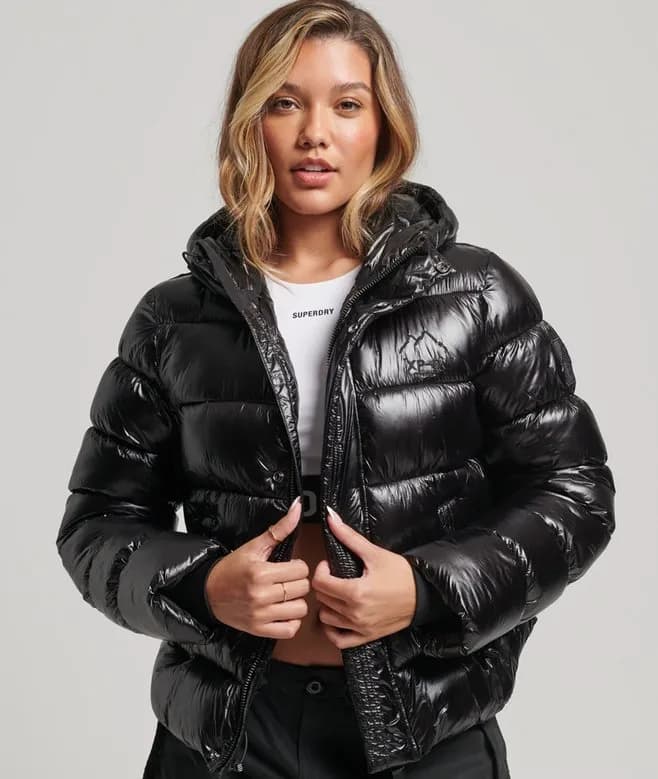
Superdry womens Hooded Shine Sports Puffer Jacket in Black

Tommy Hilfiger Down-Filled Glossy Hooded Puffer Coat | Black
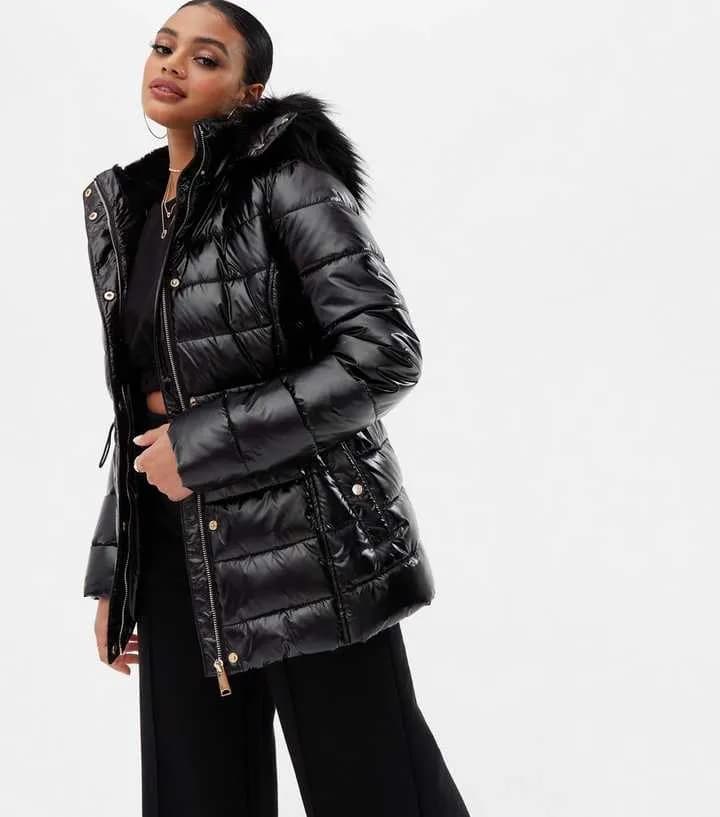
New Look Black Hooded Wet Look Puffer Jacket

MissPap Hooded Vinyl Puffer Jacket
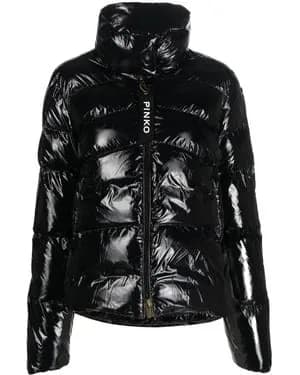
Pinko Quilted Hooded Puffer Jacket - Black (Glossy)
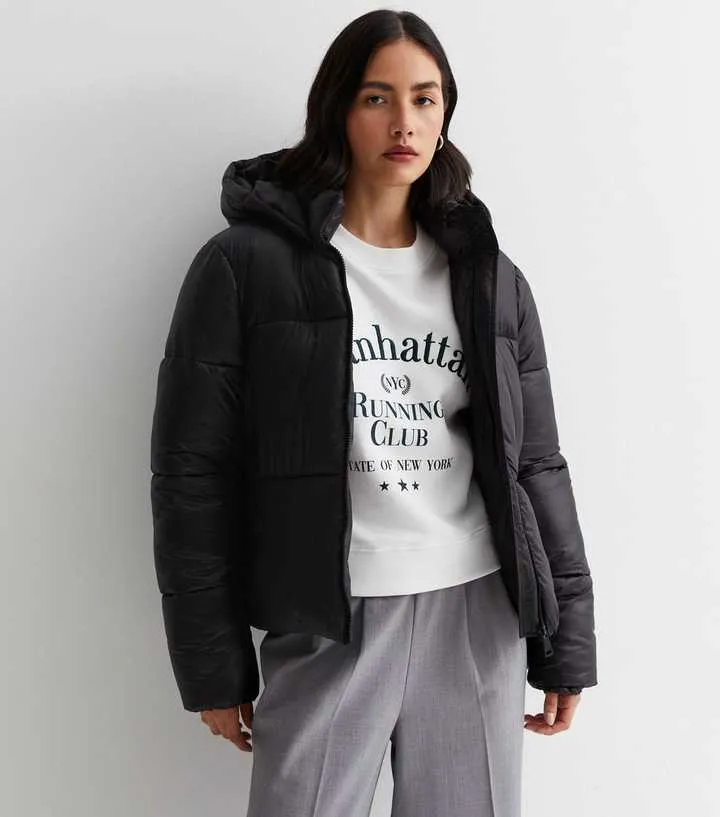
New Look Black High Shine Hooded Puffer Jacket
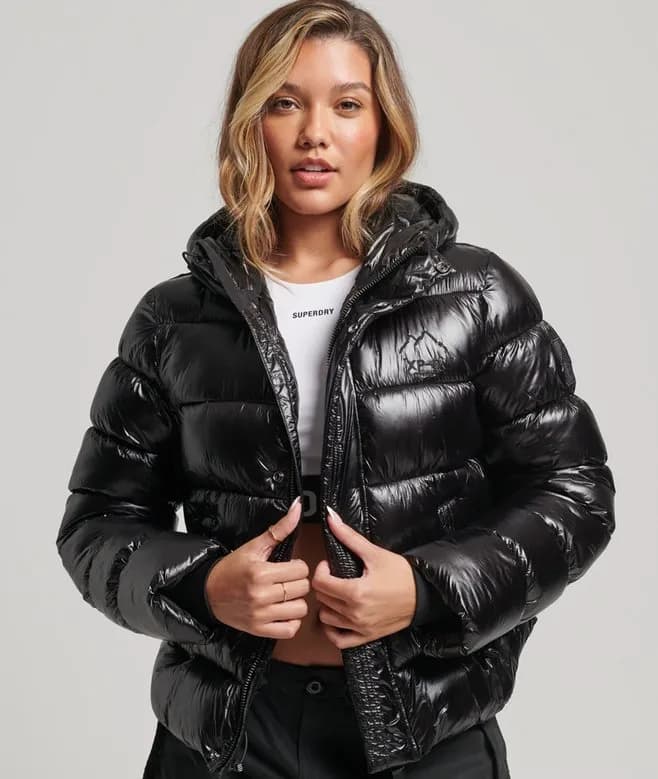
Superdry Hooded Shine Sports Puffer Jacket
Buying Guide: How to Choose a Hooded Black Puffer
Hood Functionality
Consider how you'll use the hood. For extreme weather, look for adjustable hoods with high collars. For casual use, a simpler design may suffice. Removable hoods offer versatility for changing conditions.
Insulation Weight
Match the insulation to your climate needs. Lightweight (under 600 fill power) for mild conditions, midweight (600-700) for average winters, and heavyweight (700+) for extreme cold.
Jacket Length
Hooded puffers come in various lengths—cropped, waist-length, mid-thigh, and full-length. Longer jackets provide more coverage and warmth, while shorter styles offer greater mobility.
Weather Resistance
For wet conditions, prioritize jackets with water-resistant or waterproof shells. Look for sealed seams and storm flaps over zippers for complete weather protection.
Frequently Asked Questions
Yes, hooded puffer jackets are generally warmer than their non-hooded counterparts. Hoods provide crucial insulation for your head and neck, preventing heat loss in these areas. Since up to 10% of body heat can be lost through the head, a well-insulated hood significantly improves overall warmth, especially in windy conditions.
Always follow the manufacturer's care instructions. Generally, wash your jacket in a front-loading machine with a mild detergent, avoiding fabric softeners. Use the gentle cycle with cold water. Tumble dry on low with clean tennis balls to help restore loft. Pay special attention to cleaning the hood and its edges, which may collect makeup, oils, or dirt from regular contact with your face and hair.
Adjustable hoods feature drawcords or toggles that allow you to customize the fit around your face and head. This creates a better seal against wind and cold, prevents the hood from blowing off, and can improve peripheral vision. Non-adjustable hoods are simpler and may have elastic edges but don't offer the same customized protection in harsh conditions.
While fur (and faux fur) trims add style to hooded puffers, they also serve functional purposes. The fur creates a microclimate around your face, blocking wind and trapping warm air. Natural fur (especially coyote used in premium jackets) doesn't collect moisture from breath or snow and provides superior protection in extreme cold. Faux fur options offer similar benefits to varying degrees.